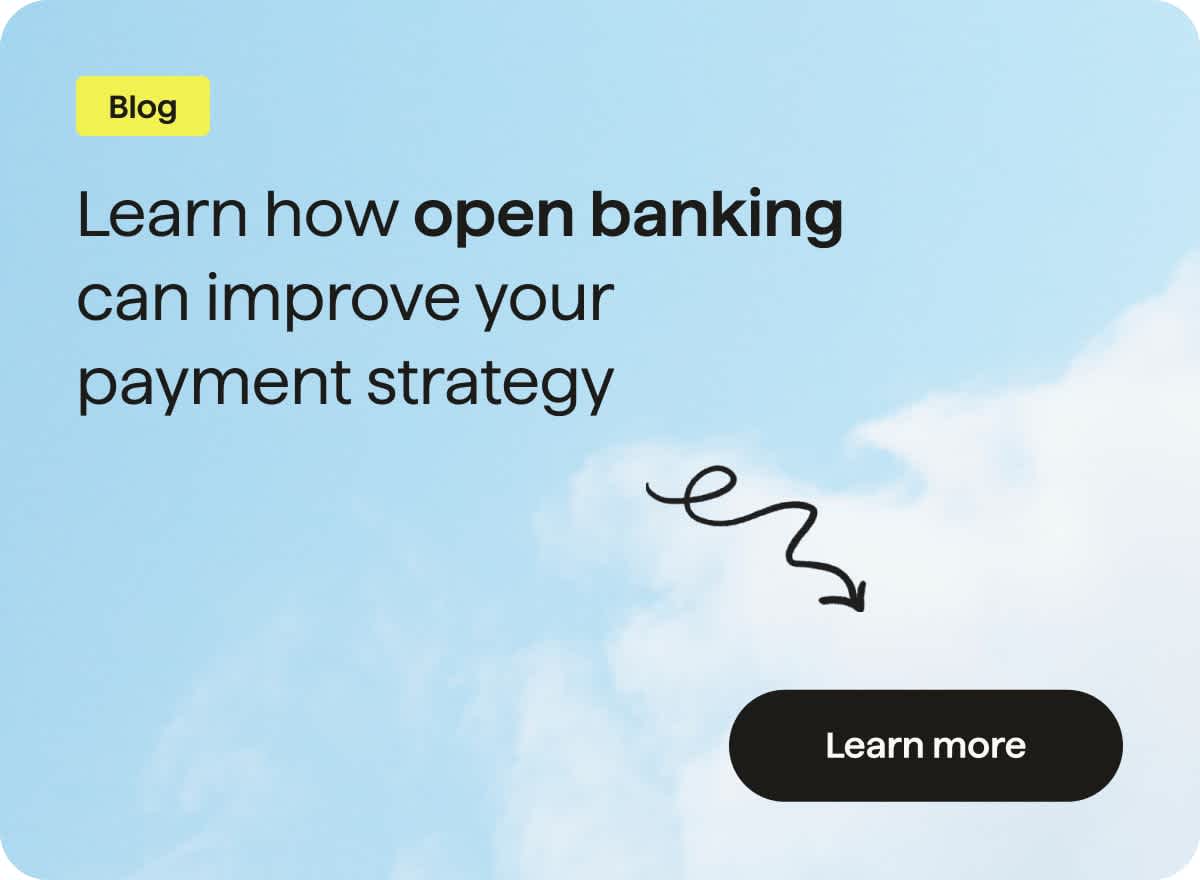
Open banking: challenges and initiatives
Last editedMay 20234 min read
Open banking, in its latest iteration, has only been around since 2018. As with all new ideas, it takes time for the market to absorb them. In this article, we will be looking at the open banking initiatives that can help this new breed of technology find its rightful place in the modern marketplace. Additionally, we will also look at the challenges that could hold back this adoption.
Initiatives: from open banking to open data
When we talk about open banking initiatives, we refer to the steps taken to increase the adoption of the open banking framework. This primarily refers to but is not limited to, the PSD2 regulation. In a perfect world, open data would be mobile enough to travel in and out of an organization, enhancing customer satisfaction.
This idyllic scenario comes to life only if both regulated and proactive initiatives come into place. Let’s have a look at some of these initiatives.
Big tech will embrace open banking
The term big tech refers to technology conglomerates such as Apple, Google, Amazon, Facebook, and Microsoft. When exploring the topic of open banking initiatives, there’s no better place to start looking than at the five most influential companies in the world.
Apple
Apple Pay
Apple Pay is a digital wallet released in 2014. It allows users with participating banks to add their credit cards to their iPhones, Apple Watch, or other Apple devices. Once a card is added, users can make payments with devices as if they were a card, using biometrics instead of a PIN.
This powerful technology is what first put Apple on the financial map. It was the start of Apple’s FinTech invasion, as Apple Pay is the backbone that makes the rest of its financial services work.
Apple Cash
Apple Cash is a service built into the Apple Pay platform, facilitating peer-to-peer transfers. This lets you send and receive cash through iMessage, with cash stored on Apple Pay. Users can then use this cash for digital purchases with Apple Pay or transfer it to their bank account.
Apple Cash helped Apple further establish Apple Pay as a standalone service.
Apple Card
Apple Card is the newest addition to the Apple lineup, and is the tech giant's biggest move into financial services yet. With a focus on transparency, simplicity, and privacy, the card is backed by Mastercard and Goldman Sachs. These principles form the bedrock of why customers see Apple as perhaps more trustworthy than banks.
The card centres around Apple Pay, but consumers can also sign up for a “laser-etched titanium card” where Apple Pay is not accepted.
Apart from the obvious Google Pay project (which merged Android Pay, and Google Wallet) that has been around for quite some time, Google has not stopped investing in open banking initiatives. Here are some of the most prominent ones:
At the end of 2018, Google obtained an e-money licence in Lithuania
Google has invested in Bangalore-based Open, a neo-banking B2B platform
Google Cloud is a solution built around banking, capital markets, and payments
The company enhanced its plans to offer digital banking services in the U.S. by joining forces with six prominent partners
Amazon
Much like its powerful counterparts, Amazon has its own payment platform, Amazon Pay. With net sales amounting to close to 386 billion U.S. dollars in 2020, Amazon is the leading e-retailer in the United States of America, giving the company the power to move the needle when it comes to payments.
From traditional checking accounts and payments to insurance and lending, Amazon is leveraging its market size to take over financial services from every angle possible. The list of initiatives is long, but the point is that Amazon is taking the open banking initiative and running with it.
Big tech is part of our life whether we realize it or not. Their buy-in to open banking technology is more influential and valuable than any government-led initiative. Yes, rules and regulations are important, but in order to adopt the technology in all facets of the market, big tech needs to take the lead.
Brand loyalty is a real thing, and these brands have the power and trust equity to get people on board.
Challenges: there’s still a long way to go
This initiative is well underway with API specification leading the journey, but the technical challenges go deeper. First, comes the reluctance of banks to move away from legacy software. Working with APIs is not only a considerable deviation from the way they have been working for decades, but it requires sizable commitments in resources, staffing, and money.
What comes after that, is creating a framework that makes synergies possible across different banks, third-party providers, and regions. “The State of API 2019 Report” by SmartBear found that 58% of API developers and consumers view standardisation as the biggest challenge facing API adaptation, a number up from 25% in 2016.
Security
Open banking security is a multi-faceted topic. Here are some of the most important areas:
Organisational structure — much like the API standardisation example, banks will have to face significant internal restructuring. With technologies merging and redefined, who holds the decision-making keys? The Chief Information Security Officer (CISO) because security issues affect the IT infrastructure. The Chief Marketing Officer (CMO) to drive growth? Conflicting internal interests might create security loopholes.
Taking advantage of TTPs — fraudsters and online con artists are relentlessly evolving their approach and trying to find weak entry points. With third-party providers usually being new FinTech players and less experienced at dealing with financial crimes, attackers can pose as them, making it hard to differentiate fraud from reality.
Endpoints security — endpoint security involves the processes, protocols, and infrastructure necessary for various business networks accessed by distant devices such as tablets, laptops, cellphones, or other wireless devices. This will always be a challenge for open banking adaptors.
Market awareness and trust
Never underestimate the power of habit and routine. People have trusted banks for decades and the system they know not only works, but it’s something they trust and feel secure about. Pitching open banking and its benefits to them is harder than one might think.
People don’t really have the time — or interest in some cases — to educate themselves on open banking. Educating them, winning over their trust, and making them regular users of open banking technology is a process that will take time.
Here is an interesting example from the US, a market still a novice in open banking adoption. According to a Mastercard report, over three-quarters of people are linking their primary bank accounts to an external FinTech account, even though only 14% say they trust this process.
On a more positive note, according to Statista, the number of open banking users worldwide is expected to grow at an average annual rate of nearly 50% between 2020 and 2024. This growth will happen in two main ways:
Word of mouth — open banking users are the best ambassadors to spread the word and strengthen the trust around the technology.
Banks — when the authority and the previously trusted provider endorse the new technology, people will listen. Trust takes time, but if banks actively pitch the new technology to their users, adoption rates will continue rising.
Are banks ready to adopt open banking?
This is a recurring theme, and it’s not by accident — it takes a lot for banks to ready themselves for the correct adoption of the PSD2. A Pulse QA study commissioned by Delphix has revealed the following eye-catching data:
Only 2% of the finance, banking, and insurance survey partakers have met all their open banking requirements to date
69% have met half or less
Just 3% of financial services (FS) organizations were confident they were prepared for the September 2021 enforcement deadline
What the survey clearly shows is that even though there is a willingness to adopt the new technology, there is still ground to cover for almost all parties involved.
If you still have burning questions about the world of open banking, you can visit our Frequently Asked Questions page.




